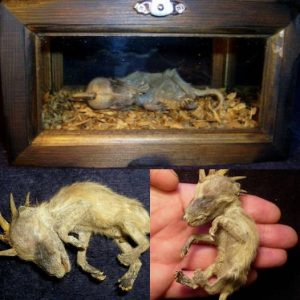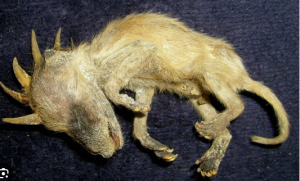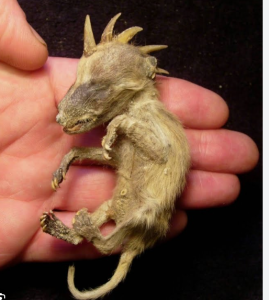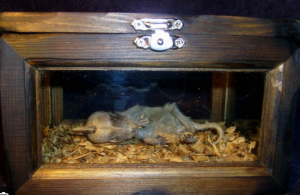In a world where the line between myth and reality often blurs, the discovery of a mummified creature resembling the legendary chupacabra has reignited the flames of folklore and curiosity. Once whispered in hushed tones as a livestock predator lurking in the shadows of the night, the chupacabra has been a fixture of modern myth. The recent unearthing of a mummified entity, small and with features eerily reminiscent of the infamous creature, poses new questions about our understanding of mythology and the natural world. This blog post delves into the fascinating journey from the creature’s legendary origins to its unexpected discovery.
Ads by MaxValue.Media

Originating in the Americas in the late 20th century, the chupacabra has been described as a blood-sucking beast, preying upon the livestock of rural farmers. Tales depict it with reptilian skin, sharp spines along its back, and an insatiable thirst for animal blood. While skeptics have often dismissed the chupacabra as mere urban legend, its story has taken root in the cultural consciousness, symbolizing the human fascination with the unknown.
The images accompanying this post offer a first glimpse at the mummified remains that have sparked a global conversation. With its peculiar physical characteristics intact, this discovery offers a tangible connection to the countless stories that have captivated imaginations around the world.

The mummified remains were found in a remote area, preserved in conditions that have kept its features remarkably intact. Scientists and myth enthusiasts alike have been drawn to its unique morphology—features that correspond unsettlingly closely with descriptions of the chupacabra. This section of the blog presents a series of images that showcase the creature’s anatomy in detail, inviting viewers to ponder the possibility of its existence beyond the realm of folklore.
This modern discovery challenges the dismissal of the chupacabra as mere myth. While DNA analysis and scientific examination are ongoing, the initial findings have blurred the distinctions between ancient beliefs and contemporary scientific understanding. Could this creature be a missing link in our understanding of biodiversity, or is it a case of convergent mythological evolution?

Bridging Ancient Mysteries and Modern Science
The discovery of the mummified baby chupacabra is not just a momentary fascination; it represents the broader human endeavor to understand the mysteries of our world. This convergence of mythology and prompts a reevaluation of ancient tales, often dismissed as fantasy, in the light of new evidence. It underscores the importance of keeping an open mind in scientific inquiry and appreciating the rich tapestry of folklore that has shaped human understanding of the natural world.
As we continue to explore these ancient discoveries, let us remember the value they bring to our collective knowledge and the humility they teach us about our place in the vast, mysterious universe. The tale of the mummified chupacabra is a reminder that the world is full of wonders, waiting to be discovered and understood, from the depths of ancient history to the frontiers of modern science.

In conclusion, the enigmatic tale of the mummified baby chupacabra bridges the gap between ancient mythology and modern discovery, challenging our perceptions and inviting us to explore the unknown with a sense of wonder and rigor. As we unravel the mysteries of our past, we pave the way for future discoveries that continue to enrich our understanding of the world around us.
As we stand at the intersection of ancient lore and contemporary discovery, we are reminded of the enduring human desire to explore the unknown, understand the unexplainable, and connect with the stories that have shaped our collective imagination.
